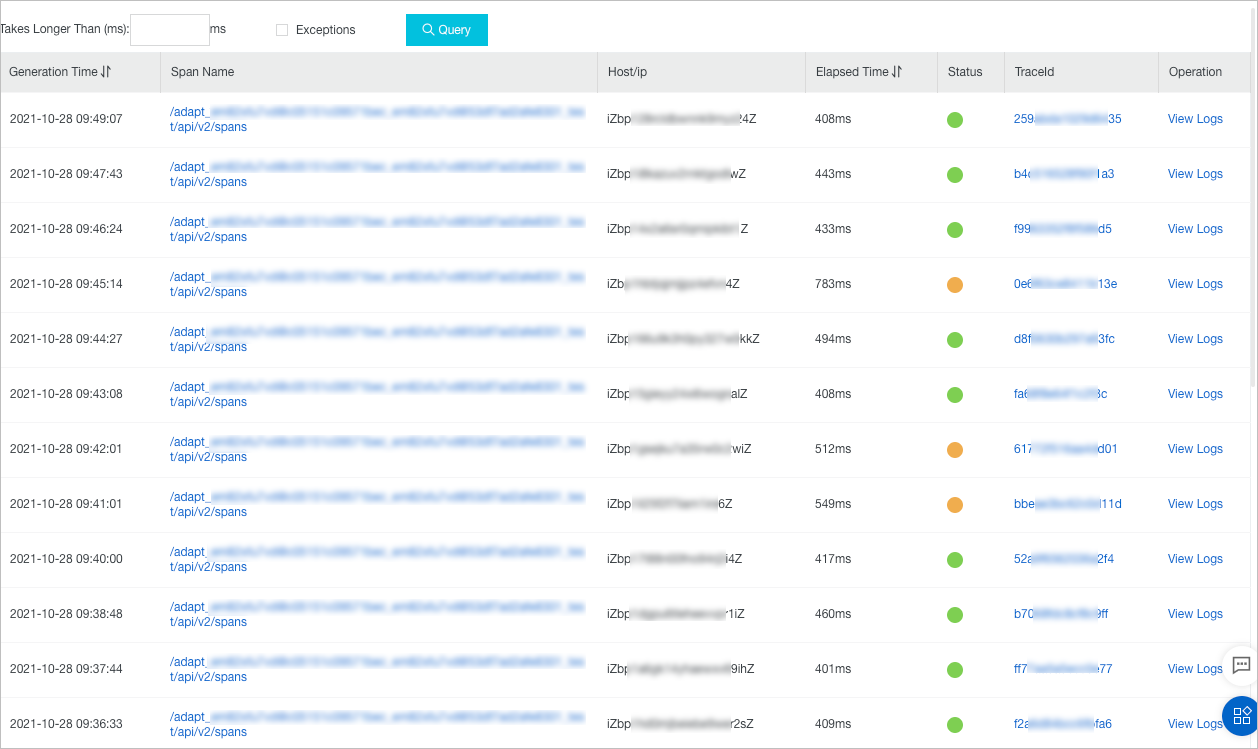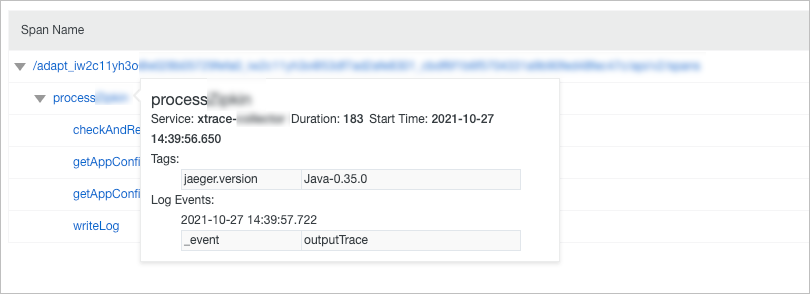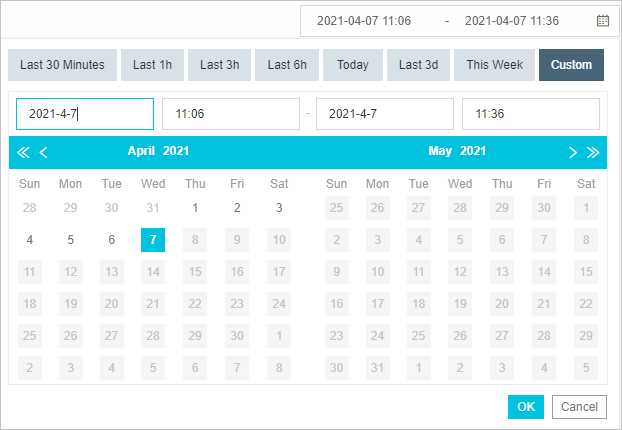On the Interface Calls page, you can view the performance metrics of the span calls on the client, span calls on the server, and internal span calls of an application. You can also view the details of span calls for the upstream services that call the application and the downstream services that are called by the application.
Procedure
Log on to the Managed Service for OpenTelemetry console. In the left-side navigation pane, click Applications.
On the Applications page, select a region in the top navigation bar and click the name of the application.
In the left-side navigation pane, click Interface Invocation.
You can click the Response Time, Requests, or Exceptions tab and click the upward arrow or downward arrow next to the tab name to sort spans in ascending or descending order by condition.
To filter the spans, you can enter a keyword in the search box and click the search icon.
Interface overview
On the Interface Calls page of an application, you can view all the spans that are involved in application calls. You can sort the spans by response time, number of requests, or number of errors. After you click a span in the span list, the Overview tab displays the topology of the span and the line charts for the performance metrics of span calls. The performance metrics include the number of requests, response time, and number of errors. 
View the details of span calls for upstream and downstream services
On the Upstream Services and Downstream Services tabs, you can view the interfaces and performance metrics of the upstream services that call the application and downstream services that are called by the application. The performance metrics include the response time, number of requests, and number of errors.
Figure 1. Downstream Traces tab
On the Upstream Traces or Downstream Traces tab, you can perform the following operations based on your business requirements:
Click Expand/Collapse All in the upper part of the tab to show or hide all interfaces.
In the upper part of the tab, enter a keyword in the search box and click the search icon to filter spans by application name or span name.
If you want to show or hide the information about the performance metrics of an interface, find the interface and click the collapse panel or click the upward arrow or downward arrow at the end of the row.
View traces
The Traces tab displays up to 100 traces that consume the most amount of time on the specified host within the specified period of time.
Figure 1. Traces page
In the Status column, the green icon indicates that the time consumed is less than 500 milliseconds. The yellow icon indicates that the time consumed ranges from 500 milliseconds to 1,000 milliseconds. The red icon indicates that the time consumed is greater than 1,000 milliseconds or that one of the tag keys of the trace is set to error.
On the Traces tab, you can perform one of the following operations based on your business requirements:
Enter a value that is accurate to milliseconds in the Takes Longer Than (ms) field and click Query. Then, the traces whose time consumed is greater than the specified value are displayed on the Traces tab.
Select Exceptions and click Query. Then, abnormal traces are displayed on the Traces tab.
Click the up or down arrow next to Generation Time or Elapsed Time to sort the traces in descending or ascending order.
Click the ID of a trace to go to the Traces page. The page displays the waterfall chart of the trace.
View the waterfall chart of a trace
The Traces tab displays the span name, timeline, application name, start time, server IP address, and status of each trace.
The IP Address column may display IP addresses or server names. The information displayed depends on the display settings that are configured on the Application Settings page. For more information, see Manage applications and tabs.
Figure 2. Traces page
Move the pointer over the name of a span to view the information about the span. The information includes the duration, start time, tags, and log events.

Specify a time range
You can select a predefined time range or specify a custom time range.
In the upper-right corner of the page, click the date and time picker and select a predefined time range, such as Last 30 Minutes, Today, or This Week.
If no predefined time ranges meet your business requirements, select Custom. Select a start time and an end time in the calendar or enter a start time and an end time, and then click OK.
NoteThe date format is
YYYY-MM-DDand the time format isHH:MM.
Figure 3. Date and time picker